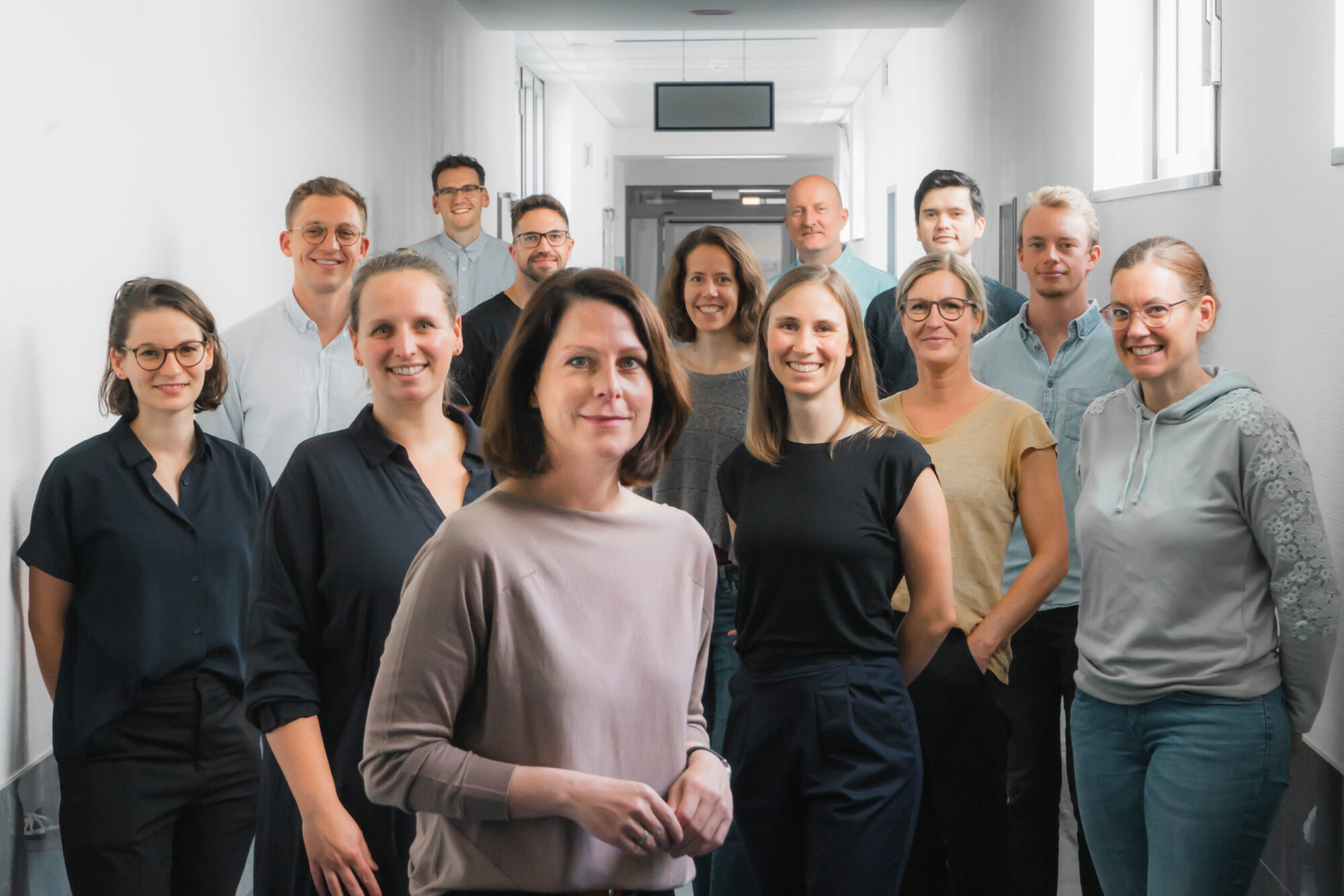The Bingel Laboratory

Prof. Dr. Ulrike Bingel and her research group focuses on the interaction between pain and cognitive processes. We have a longstanding expertise in investigating the CNS mechanisms underlying nociception, pain, and pain modulation in health and disease. In our research, we use behavioural paradigms, pharmacological modulations, as well as functional and structural brain imaging. Being particularly intrigued by the reciprocal effects of pain and cognition, we have a strong focus on translational questions such as the role of expectations and prior experiences on analgesic treatment outcomes. Our interdisciplinary research group comprises neurologists, neuroscientists, psychologists, biologists, and computer scientists and is based at the Department of Neurology at the University Medicine Essen. We are affiliated with the Erwin-L-Hahn institute for magnetic resonance imaging and the Translational Pain Research Department of the University Pain Center. Our research is funded by the Deutsche Forschungsgemeinschaft.
Recent News

After many rehearsals, yesterday some of our lab members participated in the on-site review for the third funding period of the Collaborative Research Center 1280. We represented project A11 which investigates the neural and behavioral mechanisms underlying the acquisition, extinction and reinstatement of pain-related fear in the context of somatic pain. The newly planned project for the third funding period will tackle learning and extinction in dynamic environments in healthy individuals and chronic pain patients. Now we have our fingers crossed until the DFG makes their final decision!
In the picture from left to right: Katja Wiech, Katarina Forkmann, Jialin Li, Lea Busch, Ulrike Bingel, & Katharina Schmidt

This online study (n = 532) led by Diana Müssgens assessed preferences and expectations concerning open-label placebo (OLP) dosage form, intake frequency, and pricing. Round white pills were rated as most appealing, convincing, and effective. OLP pills were expected to be most effective for improving mood and sleep. Finally, people would pay most for OLPs intended to treat chronic pain, mood, and sleep. Want to know more? Read the full article here.

Helena won one of the ten Top Young Science Best Paper Awards from the medical faculty! Read the prize-winning paper “A systematic review and multivariate meta-analysis of the physical and mental health benefits of touch interventions” published in the journal Nature Human Behaviour with shared first author Julian Packheiser here.

The Bingellab was selected by the Junge Akademie as one of 24 best research environments in Germany in 2024 (out of over 270 applications)! Thanks to our postdocs Livia and Ezgi for representing us in Berlin at the prize ceremony. Read the full shortlist here.





